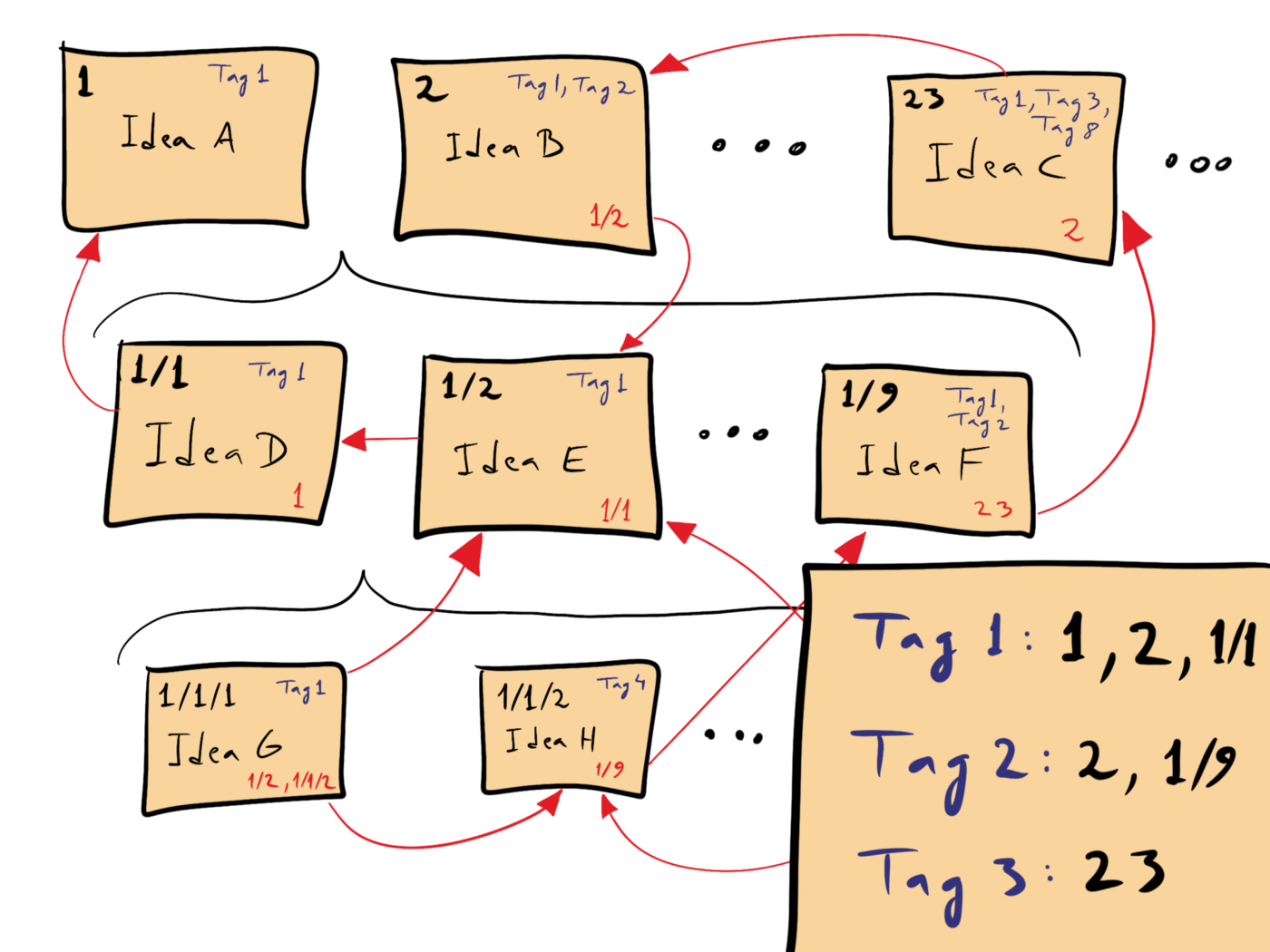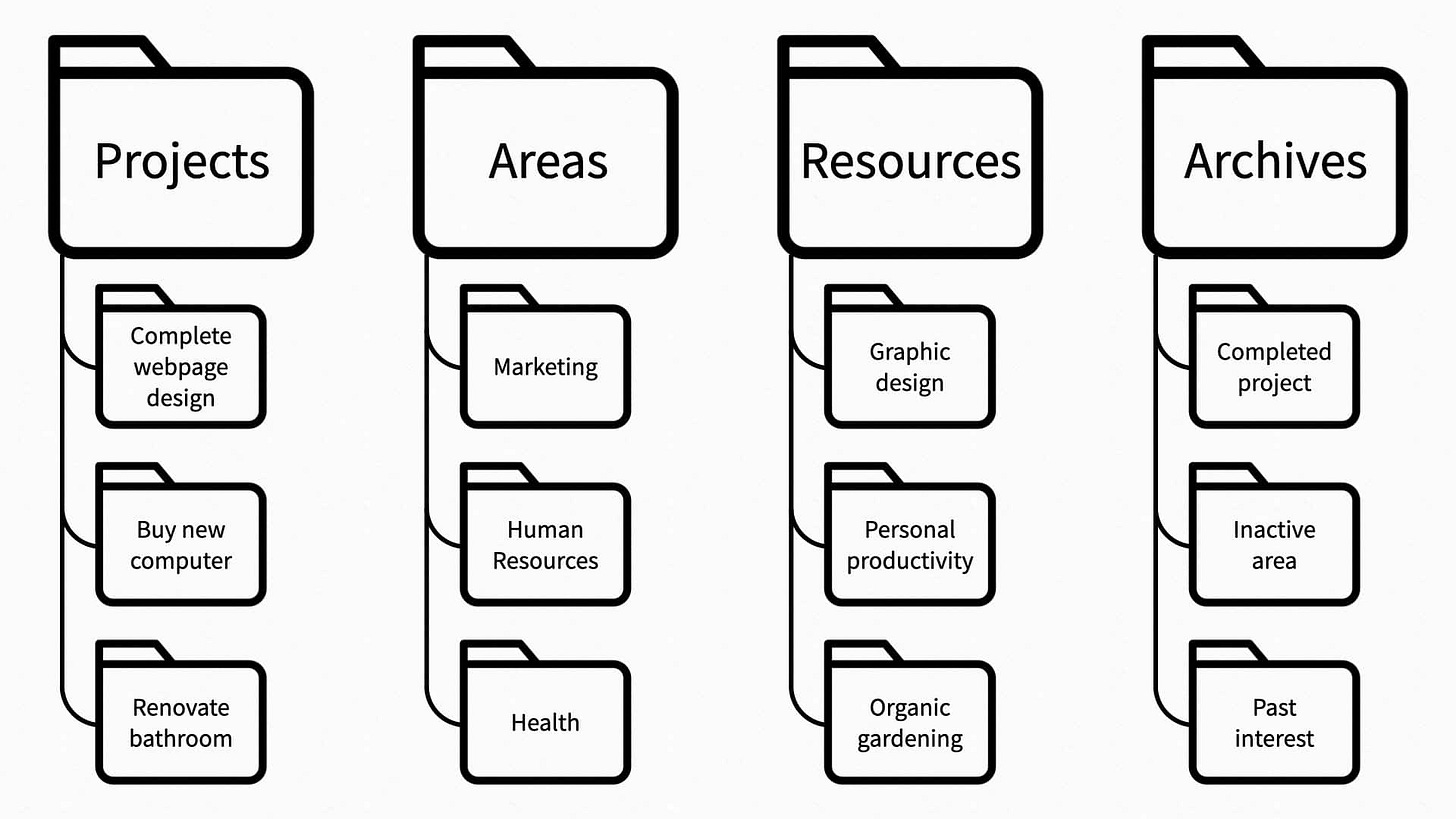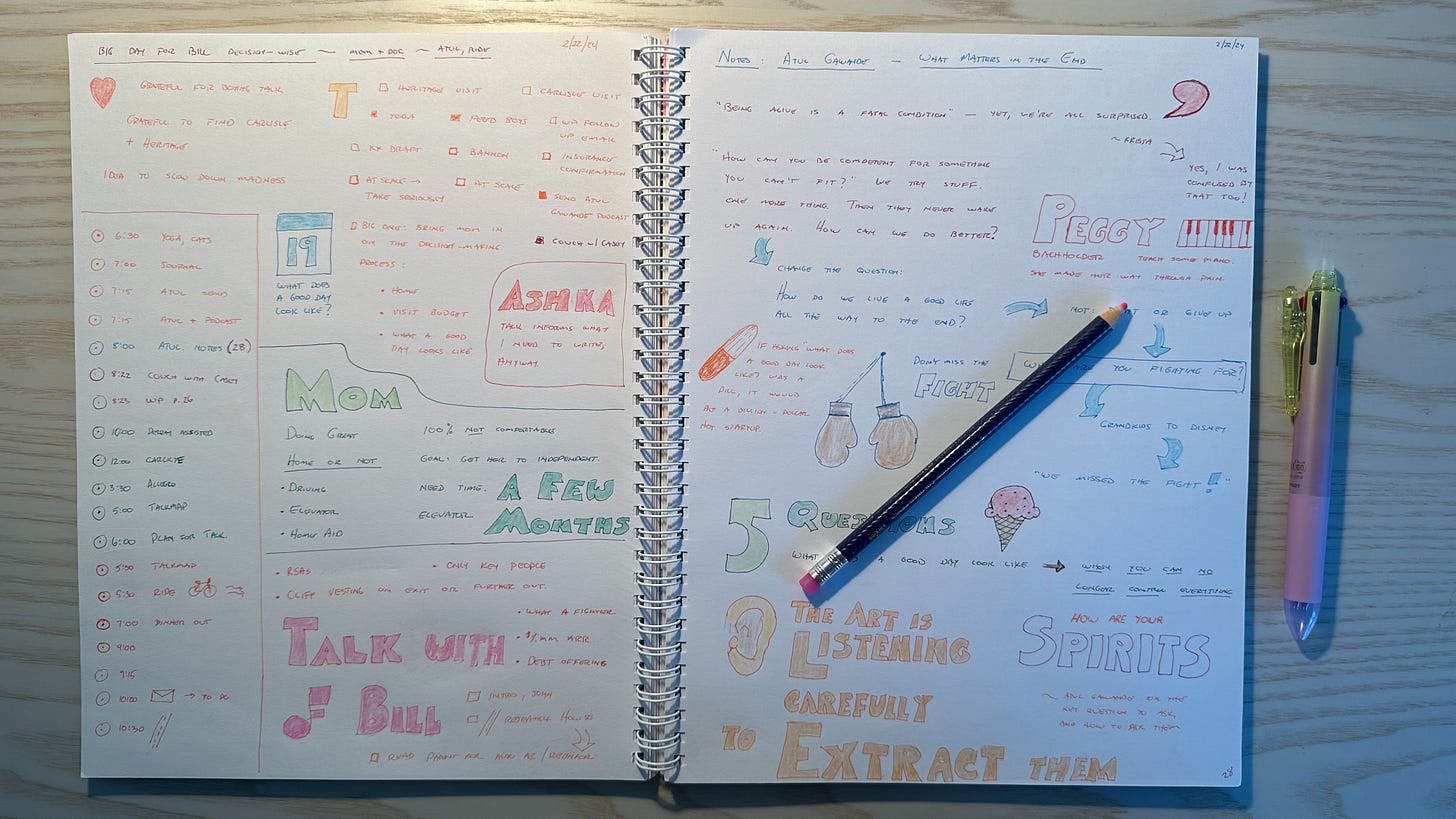How to Build a Second Brain
How can you organize ideas to keep focus and creativity? Try building a second brain.
“How can you organize ideas to keep focus and creativity?” This question was posed to the LinkedIn Top Voices critical thinking community, of which I’m a member. My response: build a second brain. A “second brain” organizes notes, ideas, and learnings outside your physical brain. It supercharges decision-making, sparks creativity, and boosts productivity.
Here’s how to build your very own second brain.
The Original Second Brain, by Niklas Luhmann
German sociologist Niklas Luhmann originated the idea of a second brain with his “slip box” (Zettelkasten in German) system from the 1900s. He named his system after the boxes he used to organize cards of research, thoughts, and ideas. Luhmann was a prolific author of 70 books and 400 articles. He developed his system to help avoid information overload. He used index cards to organize ideas by type:
Fleeting notes (temporary thoughts and ideas),
Literature notes (summaries of reading material in your own words)
Permanent notes (the archive)
Luhman’s cards looked like this:
Each card in the slip box system contains ideas about an “atomic” topic, person, book, or idea. Keeping entries small helps constrain complexity. Next, he linked and tagged each idea to find connections. The act of tagging notes is important: it forces you to “zoom out” and find connections among ideas. Eventually, notes form a network like this:

The Serendipitous Second Brain, by Leonardo Da Vinci
Perhaps the most famous note-taker is Leonardo Da Vinci. He used a “personal, informal, quick and dirty” approach: lightly organized, serendipitous, and messy. He developed a personal shorthand, and in some entries, his pen seems to have barely touched the page as he raced to keep up with his thoughts.1
Da Vinci used notes to log his explorations and experiments. He wandered from the flight mechanics of birds to the design of a flying machine to engineering sketches of designs. It’s hard to distinguish where observations ended and imagination began.
Messy second brains are common among highly creative people. In my Generative AI Growth Mindset workshop, I explore the notebooks and principles of creative discovery with paper and pen, including ideas from Da Vinci, Frida, Galileo, Jonny Ive, Tim Ferriss, and the Stanford schoo of design (d.school):

The Digital Second Brain, by Tiago Forte
Tiago Forte’s Building a Second Brain system is built with digital tools in mind and a system he calls PARA (Projects, Areas of Interest, Resources, and Archive). Like the slip box system, Forte organizes ideas by type and links them together in successive levels of immediacy: Projects with a deadline (what you’re working on now), Areas of interest (percolating ideas), Resources (deep research), and an Archive (archived projects).
The Forte PARA system is designed to work with digital tools. I use my digital journal, Day One, to implement his PARA system. Notion has pre-built PARA templates, and many extensions have been built to help you develop your digital second brain.
Forte’s book, Building a Second Brain, describes the PARA system in detail, and he teaches a course on it, too. I highly recommend both.
My Structured, Serendipitous, Digital Second Brain
Over time, I developed my system that’s 75% paper journal and 25% digital. I use Forte’s PARA system to structure notes. I tag, link, and cross-reference like Luhmann’s Slipbox. I journal to meditate, draw, explore, play, and mind map ideas.
For example, here’s how I implement the PARA system in Day One. Pink folders are for fleeting ideas, blue for projects, green for areas of interest, and gray for archives.
My paper journal is my go-to. I use it every day, all day, for all forms of serendipitous discovery—Julia Cameron's “Morning Pages” exercise, gratitude journaling, mind maps, sketches… I use Frixion erasable pens and colored pencils to sketch, edit, and play with ideas.
I cross-reference entries between my paper journal and Day One by taking pictures on my iPhone and creating separate entries for them to make them searchable.
A typical journal entry looks like this:
After three years of evolution, my hybrid analog-and-digital second brain consists of:
9,400 digital notes in Day One.
Lots of paper journals.
Lot of bad sketches. I’m visual, so I’m trying to learn to sketch. I like the exercises in Sketchnote. I Google things and try to redraw them. I’m no Da Vinci!
Critical thinking games from Dave Gray’s excellent book, Gamestorming, the work of Dave Mastronardi, and Stanford d.school.
My customized version of Forte’s PARA folders.
An analog linking and digital tagging system based on Luhmann’s slipbox.
Lots of Morning Pages (read Julia Cameron’s book to learn more).
Daily gratitude pages.
Day One’s Apple Watch app to capture ideas while I’m riding my bike.
My second brain is a Frankenstein-like combination of ideas from Luhmann, Forte, Dave Gray, Julie Cameron, Stanford d.school, and Da Vinci.
Start Building Your Own Second Brain
It can be daunting to start building a second brain. It helped me to start small:
Notice stuff.
Write notes on notecards, a journal, or a digital notes app
Mark ideas as fleeting, project-related, or references.
So, my call to action is simple: try it for 10 minutes a day and see if you like it. That’s it. The mere act of noticing is what matters most. Then do it tomorrow. Over time, you’ll develop a second brain, a rich resource, and deeper awareness. And most of all, it’s fun!
Subscribe to for more about building a second brain, from using generative AI to paper and Frixion erasable pens.
For more on building a second brain
To dive deep, read:
How to Take Smart Notes: One Simple Technique to Boost Writing, Learning and Thinking by Sönke Ahrens, and
Building a Second Brain by Tiago Forte
If you speak German, browse Nikas Luhmann’s original slip box notes
… and follow the links in this post.
Follow me on LinkedIn
LinkedIn recently named me a “Top Voice in Data Analytics.” They ask me to answer questions in less than 750 characters, and I love the challenge of writing rapid-fire, quick-hitting answers. For example, check out their data analytics questions here.
Follow me on LinkedIn to watch for these “Top Voice” posts.
And check out these other Substacks I love:
AI Supremacy by Michael Spencer ~ Marcus on AI by Gary Marcus ~ Last Week in AI~ On the Mark Data by Mark Freeman ~ Polymathic Being by Michael Woudenberg~ The Algorithmic Bridge by Alberto Romero ~ The Muse by Birgitte Rasine ~ The Intrinsic Perspective by Erik Hoel ~ The Pragmatic Engineer by Gergely Orosz and Hugh Kennedy from PJA








Lots of discussion and comments on this one on LinkedIn here: https://www.linkedin.com/posts/markwpalmer_how-to-build-a-second-brain-activity-7168601799866703872-pltn?utm_source=share&utm_medium=member_desktop
I was introduced to Obsidian about 6 months ago for building a second brain. I still feel very new to it's possibilities, but one feature I like is its ability to link notes together in any way I choose.
Have you tried it, what do you think?